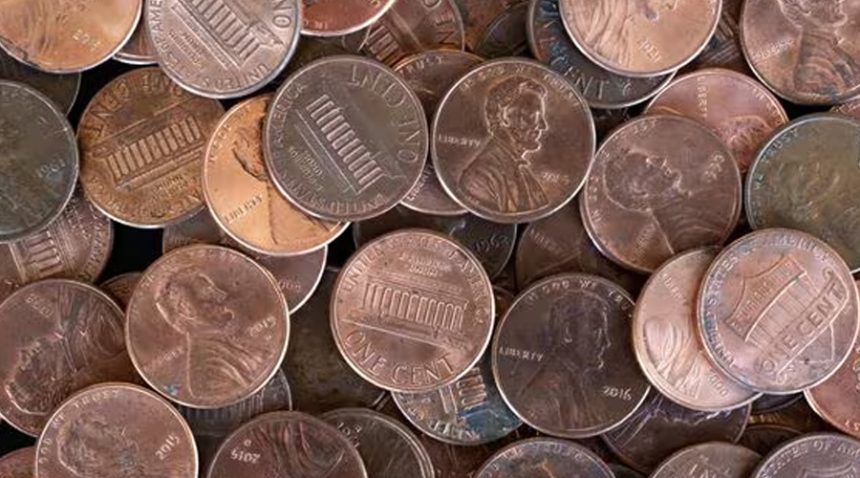Supporters praise the move for cost-saving benefits while critics argue about its impact on low-income groups
President Donald Trump has instructed the US Treasury to cease the production of pennies. According to him, minting pennies is a costly operation as well as quite inefficient. In his announcement on Truth Social, he explained that making a US penny costs more than 2 cents. The move is part of a bigger effort by the government to reduce non-sensical expenditure.
Why Did Trump Fire Penny
The elimination of the penny took place after recommendations from Elon Musk’s Department of Governmental Efficiency (DOGE). DOGE detailed how the US Mint made losses operating the coin sectors. Reports for the fiscal year 2024 pointed out that the US Mint incurred US$85.3 million, making 3.2 billion pennies, incurring 3.7 cents on each penny. The loss touches other coins as well, including nickels, which have a face value of 5 cents but cost around 14 cents to produce.
Trump’s penny-saving plan is part of a larger effort to cut the federal government US$2 trillion. Over the years, several lawmakers have introduced legislation to end the penny, citing savings for taxpayers, faster retail transactions, and reduced environmental impact from zinc and copper mining.
Can Penny Production Unilaterally End
Legal scholars are confused about whether it is within Trump’s authority to abrogate the use of the penny without Congressional clearance. Congress had the authority over currency specifications. However, the Treasury Secretary had the discretion to mint coins and issue what was necessary at a given point in time. This legal space may raise issues on whether the move will require further legislative support or not.
Mixed Reactions
The decision for US to stop minting pennies garnered mixed reviews from various interest groups:
1. Positive Reactions
Cost Savings: Many taxpayers and economists welcome the move, believing it will save millions annually and reduce resource waste.
2. Increased Collectible Value: As pennies become scarce, existing coins might gain value, benefiting collectors.
3. General Unpopularity: Many consider the penny outdated and cumbersome, viewing its elimination as a long-overdue change.
Negative Reactions and Concerns
Impact on Poor People: Economists caution that rounding cash transactions to the nearest five cents might become a kind of ‘rounding tax’. This may hurt the section of the population that is largely dependent on cash payments.
Need for More Nickels: If pennies were eliminated because they are already used as a form of change, the need for nickels would rise as they are also more expensive to produce.
Impacts on Charities: Many charity organizations depend entirely on small, loose change funds. The demise of the pennies may drastically decrease their charity contributions.
Financial Impact of Cancelling the US Penny
Government Expenses
The total amount of cash that the government will save would be around 250 million due to the reduction in penny production. Penny production is above its face value, and as such, doing away with its production will cease the unnecessary and wasteful dollar losses.
Inflation
Businesses and consumers would likely opt for rounding policies for cash transactions in the absence of pennies in circulation. While some may fear that rounding may cause slight inflationary effects, historical evidence from countries such as Canada and Australia suggests the impact would be negligible.
Effect on Charities and Collectors
These charities depend on small change donations and may need to adopt other fundraising strategies To numismatists and coin collectors, it may be lost as old penny designs and rare coins carry great value.
Other Countries that Stopped Penny Minting
Several countries have phased out their lowest denomination coins because of cost issues, like:
1. Canada phased out its penny in 2013 and introduced cash rounding.
2. Australia and New Zealand stopped printing one and two-cent coins decades ago. There is hardly any economic damage registered.
3. Sweden and Finland have also stopped using small coins and now solely rely on digital transactions.
Alternatives to Quashing Penny Printing
Instead of scrapping, most experts have suggested a new alternative:
Using Cheaper Metals: Making production less expensive. A report by the US Mint in 2014 concluded that no alternative composition would make the pennies profitable.
Increase the Penny’s Value: Economist François R. Velde once proposed raising the penny’s value to five cents, thereby increasing the money supply by US$6 billion.
Optional Rounding: Rather than abolishing pennies, Congress could permit optional rounding for cash transactions while retaining exact pricing in electronic payments.
Review of Mint Overhead Expenses: The Mint could establish some cost-effective measures regarding working expenses. The measures will be primarily for nickels, which also produce high losses.
Conclusion
Trump’s decision to stop minting pennies marks a significant shift in US currency policy. While supporters praise the cost-saving potential, critics worry about the impact on low-income individuals, charities, and collectors. The long-term effects of this move remain to be seen. However, with other nations like Canada, Sweden, etc., having successfully eliminated their smallest coins, the US may be on a similar path toward streamlining its currency system.





